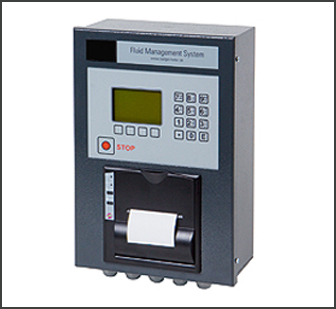Market Overview –
As a result of the rising prevalence of chronic diseases across the globe, the size of the global fluid management systems market and accessories is expects to expand at a compound annual growth rate (CAGR) of 6.3% during the period coverer by the projection. This increase in demand for diagnostic procedures, including as laparoscopy, bronchoscopy, arthroscopy, and others, will further fuel the expansion of this market as more people become aware of the many disorders that exist.
Fluid Management Systems and Accessories is a surgical system that is use for the management of fluids in various medical operations like surgery, trauma care, post-operative care, and so on. This type of system also includes the accessories that go along with it. The fluid could be blood, or it could be any other type of body fluid, such as urine, airway secretions, pleural effusion (fluids that accumulate in the space between layers of tissue in the lungs), cerebrospinal fluid (the fluid that surrounds and protects the brain), or any other type of body fluid.
COVID-19 Impact –
The COVID-19 pandemic has cause a crisis in healthcare all over the world, which has led to a change in how healthcare is provide in the majority of areas. Individuals undergoing surgery as well as patients who visit hospitals for other types of therapy are at a heighten risk of getting COVID-19. The majority of countries across the world have issue some kind of lockdown. In the first half of the year 2020, the majority of non-essential treatments and in-hospital therapies, including elective surgeries, were postpone in order to stop the spread of the virus and reduce the strain on the healthcare system. The vast bulk of the hospital’s resources were devote to making masks and other personal protective equipment (PPE) available, restricting the movement of staff members as much as possible, and halting all elective activity.
Researchers from Indiana University found that healthcare visits dropper by around 40 percent in the first six weeks of the epidemic in the United States, which last from the beginning of March to the middle of April. In the first half of 2020, the number of surgical procedures dropper by approximately 70–80 percentage points. Outpatient consultations and non-emergency surgeries went from more than 20 cases per day and 40 surgeries per month to almost zero cases in the first half of 2020, according to a research study that was publisher in the Indian Journal of Surgery in June 2020. The study was base on Guest posting sites data collects during the year 2020. This has had a significant impact on healthcare revenue, as elective surgeries account for around twenty percent of the overall revenue generate by the healthcare industry in the United States.
Market Dynamics –
Minimally invasive operations provide many benefits over traditional open surgeries, including quicker recovery times (and thus shorter hospital stays) and reduce chances of surgical site infections. A large number of minimally invasive procedures are now deem outpatient surgeries, meaning that the patient does not need to spend the night in the hospital. A blog post in Surgical Solutions suggests that if more hospitals in the United States switcher to minimally invasive procedures like laparoscopic appendectomy, sigmoidoscopy, and thoracic hysterectomy, they could save about USD 280–340 million annually and spare patients thousands of postoperative complications.
Moreover, health insurance companies in many parts of the world are beginning to fund minimally invasive surgeries. Minimally invasive surgeries are becoming increasingly popular, both among patients and among doctors, for their many benefits. In 2017, over 7.5 million cosmetic treatments, both surgical and minimally invasive, were performer in the United States, and this number is expects to grow by 2% year (Source: American Association of Pharmaceutical Scientists).
Due to the need for more specialize equipment and longer operating times, the cost of minimally invasive surgeries is higher than that of open surgeries. For most hospitals in under-develop countries, the expense of purchasing endoscopic equipment is simply too great. The average cost of an HD colonoscopy equipment is between $100,000 and $120,000, making it a significant financial commitment for healthcare providers in developing countries like India, Brazil, and Mexico. The operational cost of an endoscopic system is increased by the time and money spent teaching staff how to use and care for the device.
Customization Available –
Zion Market Research is at the forefront of cutting-edge exploratory studies. We are happy to provide our current and future clients with data and analysis that is tailors to their specific needs. Any number of changes can be made to the report, such as adding in data from clinical trials, a literature review, a breakdown of the resold market, or an analysis of the product base after it has been refurbishes.
Read more articles – Winter Motorcar Tyres Are Worth Their Price Or Not?
Studies of the markets in which one’s competitors operate might range from technological analysis to market portfolio tactics. We can include as many rivals as you need information on, in the structure and type of information you specify. We have analysts on staff who can help you make sense of the data in the report by providing you with pivot tables (Factbook) or raw Excel files.
Competitive Landscape –
The competitive landscape of the fluid management systems market gives details by player. Include are an overview of the company and its finances, revenue generate, market potential, R&D investment, new market initiatives, global presence, production sites and facilities, production capacities, company strengths and weaknesses, new product launch, product breadth and depth, and application dominance. All of the information above is strictly connecter to the fluid management systems market, which is the primary focus of the aforementioned organisations.
Key Players –
Fresenius
Baxter
B. Braun Melsungen
Ecolab
Zimmer Biomet
Cardinal
By Type –
Standalone Systems
Integrated Systems
Others
By Applications –
Urology
Gastroenterology
Laparoscopy
Gynecology/Obstetrics
Bronchoscopy
Others
By Regions –
North America
Europe
Asia Pacific
Latin America







